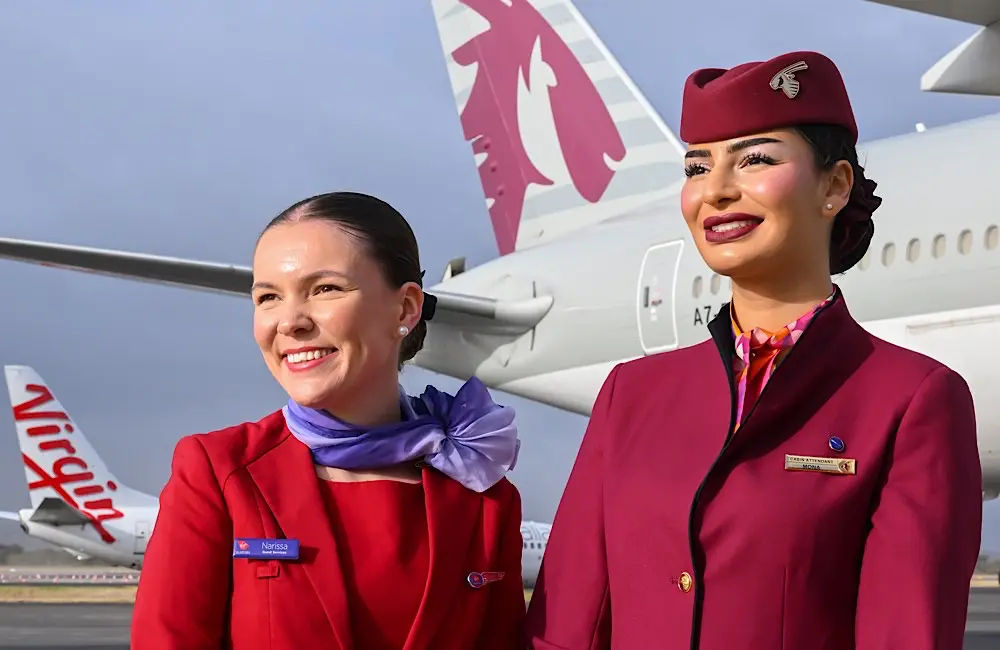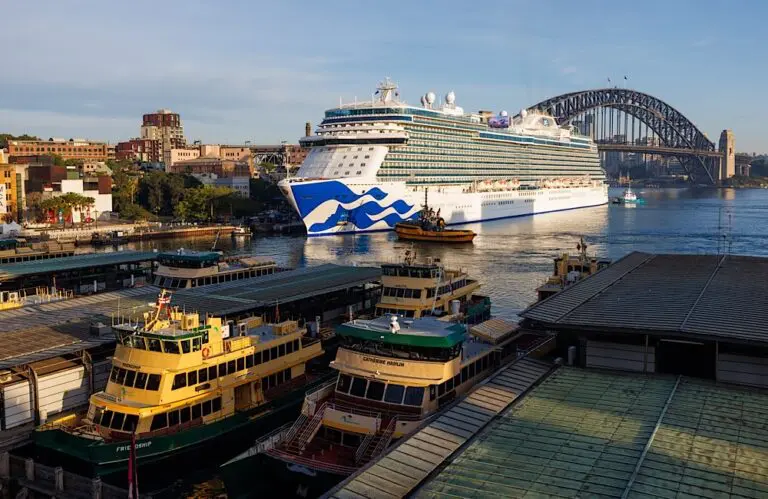Following last week’s Australian airline and travel company end-of-financial-year ASX results, one thing is clear: Australians continue to take off in record numbers. International short-haul trips are booming, while domestic and once-favourite US getaways are slipping behind.
International travel has roared back in the year to the end of June 2025, according to ASX‑lodged company results, as Australians continue to prioritise adventures abroad.
The Qantas Group (Qantas and Jetstar) carried almost 56 million customers in FY25, around four million more than the previous year. Jetstar (JQ) alone delivered a standout 730,000‑seat jump in international flights, becoming the single largest contributor to Qantas Group’s passenger growth.
Over the year, JQ carried a record 16 million domestic customers, with roughly one in three travellers booking fares for under $100. A clear sign that affordability is still resonating while household budgets remain tight.
Looking ahead, Qantas Group is projecting 12 per cent growth in Jetstar international services for the full year ahead. By comparison, Qantas International is expected to grow 8 per cent.
Agencies show the same trend—Flight Centre and Helloworld weigh in
Flight Centre Travel Group reported heightened demand through June and July for regional hotspots like China, Japan, New Zealand, and Vietnam, which were favoured for their proximity, safety, and value, while appetites for travel to the US faded. The group reported that Australian demand for travel to the United States fell 11 per cent in the fourth quarter, a sharp reversal after a 7 per cent increase over the first nine months of the year.
While it may feel easy to blame Trump-driven policies and the tariff war for the drop (and that is absolutely a factor), an ongoing unfavourable Aussie dollar exchange rate and U.S inflation pushing up prices on the ground haven’t helped leisure travellers either.
Helloworld is seeing similar shifts. While overall TTV softened slightly, the group’s wholesale and inbound divisions delivered strong growth, helping to lift profit. CEO Andrew Burnes said the company’s investments in technology and product breadth are paying off, explaining that “we have continued to invest in our business, growing our technology options and expanding our wholesale product range while enhancing our core capabilities around ticketing and air consolidation.”

Together, Australia’s two largest travel groups tell the same story: travellers are booking smarter, choosing shorter and mid-haul trips, and choosing destinations that offer more bang for buck on their trips. For advisors, the takeaway is clear: customers want affordability and flexibility, and agency networks are reshaping to deliver precisely that.
Jetstar has capitalised on this, especially on Japan routes, with Tokyo and Osaka flights booming. The momentum also aligns with JAL and ANA doubling their Aussie flights, alongside broader expansions like Garuda’s Bali focus and China Southern’s Darwin launch.
What does ABS data tell us about Australians’ favourite destinations?
ABS data showed Australians took more than 11 million outbound trips in the year to June 2025, a whopping 32 per cent increase on 2023/24. Indonesia (Bali) and New Zealand remained the top two destinations, with Indonesia surging further ahead.
Japan was the standout growth market and rose to the third most popular destination, up 10.5 per cent year-on-year, confirming the “Japan boom” is showing no signs of easing up.
China and Vietnam posted some of the strongest growth rates, up 26.8 per cent and 27.5 per cent, respectively, reflecting both value and renewed access as routes expanded. These figures reinforce the clear tilt towards Asia-Pacific short and mid-haul escapes.
While Fiji sways gently at number 10 on the destination list for June 2025, the Pacific archipelago also recently marked another significant milestone. According to the island nation, it welcomed a record 99,311 visitors in July, the lion’s share of whom were Aussies, surpassing July 2024 figures by 1 per cent and July 2019 figures by 3 per cent.
Virgin Australia’s bounce back

After nearly five years of absence from the ASX, Virgin Australia (VA) made a comeback in June 2025, its first appearance since its 2020 delisting following going into voluntary administration.
Having now been well and truly rebooted, in FY25, VA reported an underlying net profit of A$331 million, up 28 per cent, driven by demand, cost efficiencies, and loyalty income.
CEO Dave Emerson said the airline had “strengthened our partnership with Qatar Airways Group (QR) and returned to public ownership through a successful IPO, a strong endorsement of our clear strategy and market position.”
Virgin’s return to the market was met with initial enthusiasm. Its IPO raised A$685 million, and its share price jumped nearly 8 per cent on listing day. Emerson added that “it’s been a long journey and a great milestone recognising all the progress that we’ve made… we have to keep focusing on lifting the business performance.”
According to Virgin Australia, by December 2025, the VA/QR alliance will boost annual flight capacity from Australia to Doha to 2.65 million seats, a move designed to increase market competition and provide more choice for Aussie travellers visiting Europe, Africa, and the Middle East.
Despite global geopolitical uncertainty and tighter household budgets, the outlook for FY26 is strong. Travellers across Australia are showing resilience and a determination to keep exploring as a priority, whether through budget-friendly short-haul trips, agent-curated packages or evolving airline offerings.
KARRYON UNPACKS: This isn’t just about increasing travel stats; it’s about how Australians travel. Budget carriers, regional destinations, empowered agents, and airline reinvention are reshaping the travel landscape. For the Aussie travel community, it means smarter options, broader access, and renewed optimism.






